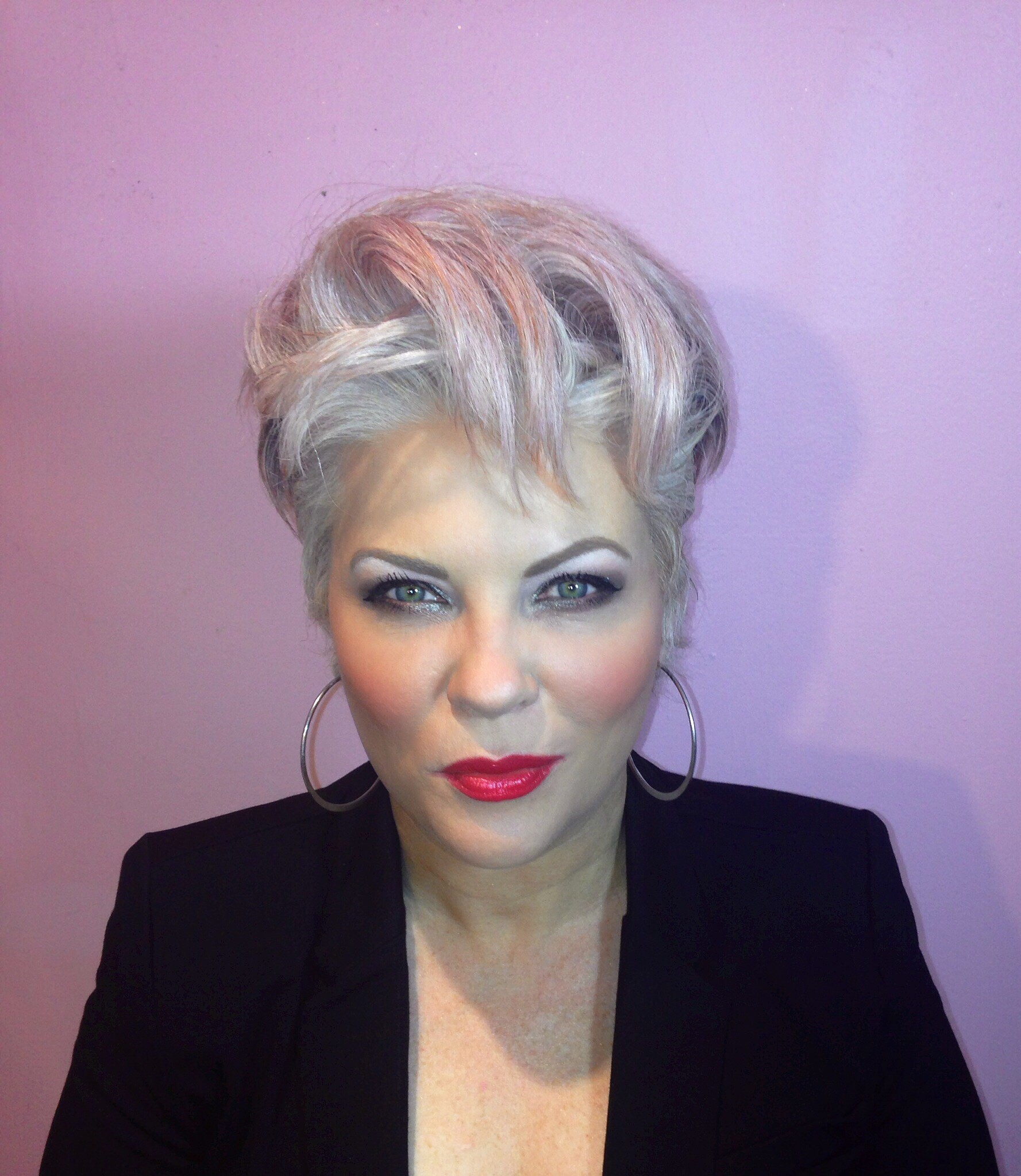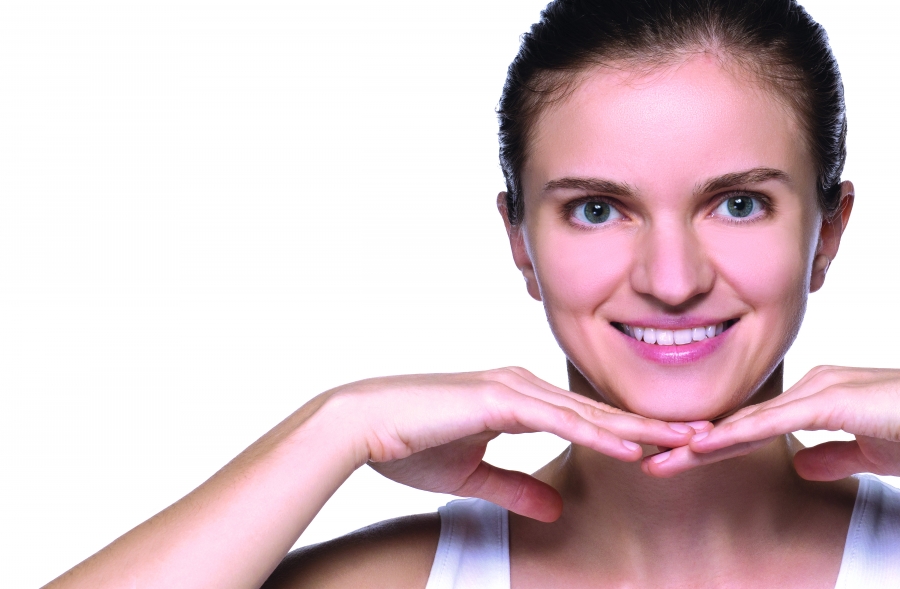Facial Exercises: Are they more than tongue and cheek?
Written by Melissa BlackThe topic of facial exercising has been well researched, along with the many ways individuals use their facial muscles throughout the day and what impact that has on their face as they age.
Recently I watched an Instagram video on face yoga, a discipline touted by Hollywood A- listers like Jennifer Aniston and Gwyneth Paltrow. One of the exercises was crossing one’s eyes together while focusing on the tip of the nose and then holding cross eyed for a count of 15 seconds. It seemed a bit ridiculous. This led me to another thought of my friend telling me she encourages her nurse injector who performs Botox to freeze her muscles to the absolute maximum, creating zero movement. The thought of being frozen, devoid of any facial expressions, was equally bizarre.
WHAT DO THE STUDIES SAY?
Can we truly work out the muscles in our face just like we do the rest of our body and get clear visible results?
Human faces were meant to be expressive, to show emotion. Individuals have 40 muscles in their faces. The muscles in the face are not like muscles in the rest of the body, though. Rather than being attached to bone, the facial muscles are attached to the skin.
A plastic surgeon, who is always ready to debunk the latest non-surgical face lifting fad, cited a facial exercise study. This was the first scientific study of its kind to test the premise of facial exercise improving appearance.
The study, published January 3rd, 2018 in the journal JAMA Dermatology conducted by Dr. Murad Alam, vice chair and professor of dermatology at North Western University Feinberg school of medicine and a North Western dermatologist, specifically helped middle-aged women to appear more youthful.
Alam said, “The exercises enlarge and strengthen the facial muscles, so the face becomes firmer and more toned and shaped like a younger face. Muscle growth is increasing the facial volume and counteracting the effects of age-related fat thinning and skin loosening.”
“As the face ages, the skin loses elasticity and fat pads between the muscle and skin become thinner,” he continues. “The fat pads, which fit together like a jigsaw puzzle, give the face most of its shape. As skin becomes saggy, the thinning fat pads atrophy and slide causing the face to fall down. Assuming the findings are confirmed in a larger case study, individuals now have a low-cost, non-toxic way for looking younger or to augment other cosmetic or antiaging treatments they may be seeking.”
The study participants were women ranging in age from 40 to 65 years old that underwent two sets of 90-minute training sessions from a facial exercise instructor, for a total of 20 weeks.
“Facial exercises that may be beneficial include those that entail puckering and squeezing the cheeks” Alam said. “There are many muscles that collectively allow movement of the cheeks, and our study showed that building these makes the upper and lower cheeks fuller. At the end of the case study, participants reported being highly satisfied with the results and noticed improvement on nearly all the facial areas that were rated. There is almost a three–year decrease in age appearance in a 20-week period.”
SIX EXERCISES
Here are six of the exercises Alam’s facial trainer gave the participants in the study.
The Cheek Lifter
Gravity tends to age by pulling the cheeks down, giving a flat-faced appearance. This exercise targets the levator lobii superiroris, caninus, and zygomaticus major and minor and helps to develop the upper lip.
Smile and open the mouth while forming a long “O.” Fold the upper lip over the front teeth. Smile again to lift those cheek muscles up. Place the index fingers lightly on the top part of the cheek, right on top of the cheek muscles, directly under the eyes. Relax the cheek muscles allowing them to return to their original relaxed position. Do this 10 times.
Cheek Sculpting
This exercise helps create a better cheekbone shape. It tightens all then cheek muscles and helps to lift the middle part of the face.
Smile without showing teeth, while rolling the lips outward as if trying to show as much lip as possible. Try to smile with the corners of the mouth forcing the cheek muscles up. You should feel a slight “burn” in the mouth corners.
Next, place the index fingers at the corners of the mouth, just above the mouth corners, pressing firmly. Now, slide the index fingers up to the cheekbones, pressing deeply into the muscle, using very firm pressure. Maintaining that pressure, use fingertips to lift those strands of muscle up and over the cheekbones, towards the corners of the eyes. When at the top of the cheek bones, stop and press tightly, holding the muscles in place. Hold for 20 seconds. Feel the muscles tightening in the cheeks. Be careful not to slide fingers up too far, past the eyes, as you will lose grip on those thin strands of muscle. For added pressure, and to help hold the grip in place, press the middle fingers on top of the index fingers. Repeat this exercise two more times.
Upper Eyelid Firmer
This exercise helps strengthen both the oculi palpebral and levator superioris, the muscles that help open and close the eyes. It helps to smooth out wrinkles and fill in deep hollows on the upper eyelids.
Place fingers in the same position as the lower eyelid firmer. Now, close and squeeze eyes tightly together. Roll eyeballs up towards the ceiling. Feel the upper eyelid stretching, continuing to look up with eyes squeezed tightly together. Hold tightly for 30 seconds. Repeat two times.
The Eyebrow Lifter
This exercise helps both the occuli polpebrol and levator superioris which are the muscles used to open and close the eyes. It helps to smooth out wrinkles on the upper eyelids and helps to lift the eyebrows. It also strengthens the procerus and corrugator muscles which will smooth out the vertical lines between the eyebrows.
Smile. Press three fingertips of each hand under the eyebrows to force the eyes open. Smile while trying to drown the eyebrows down against the fingers. Hold and breathe deeply. Now, close the upper eyelids down tightly and roll the eyeballs up towards the top of the head. Hold tight for 20 seconds. Release. Repeat this exercise three times.
Scooping Jaw and Neck Firmer
This exercise strengthens the group of muscles located on, around, and under the chin, including the triangularis, depressor labii, mentalis, mylohyoid, digastric, and the piatysma.
It also helps to diminish wrinkles on the side of the chin and strengthen the jawline.
Open the mouth and make an “ahhh” sound. Fold the lower lip and the corners of the lips into the mouth and hold them tightly. Extend the lower jaw forward. Using the lower jaw only, scoop up very slowly while closing your mouth. Visualize using the jaw to scoop up something heavy. Pull the chin up about an inch with each scoop, tilting the head backwards. Open and close the lower jaw for 10 repetitions. Repeat this sequence three times.
The Temple Developer
The training of the temporalis muscle, located on each side of the head, is one of the most important muscles in the facial program, but it is also one of the most difficult to control. A strong and toned temporalis will tighten and strengthen the whole upper portion of the face. This exercise also contracts the occipitalis muscle at the back of the neck where the scalp ends. When the occipitalis contracts, it helps to activate the temporalis.
Place the fingers together on the temples. Press lightly on the temples while closing the jaw, clenching the teeth together and moving the chin up. Clench the teeth together, putting tension in the muscle as if trying to make the ears move backwards. Hold the teeth tightly clenched for 10 seconds. Next, clench down on the back teeth for a count of 10, feeling the temporalis muscle flexing with each clench. Repeat this exercise three times.
TREATMENT ROOM TIPS
Salons and clinics are offering these types of exercises within a spa environment already.
Face Gym Facial Workout studio in California is known for “it is not a facial but a workout for the skin” approach to its skin care sessions using high energy kneading movements and technology to tighten and tone.
They use a mixture of effleurage, jacquet pinching, lymphatic draining, petrissage, and tapotement. Clients are left de-puffed, pink, and glowing. These professionals also use microcurrent and radio and high frequency tools.
Here are some fun and effective ways to launch these treatments with clients.
Design a facial with extended timing to incorporate detoxifying massage to target skin that is dehydrated, sluggish, and compromised from the dry winter air.
Invite clients to a lunch and learn where to demonstrate the new service and educate clients on the benefits of making this a lifelong routine.
Offer package deals bundling three to four sessions which include a private training where clients are taught facial exercises they can do at home.
Partner up with yoga and pilates studios for cross-promotions.
Utilize social media to become the expert in the area. Content is key and videos, stories, and posting go a long way. Due to the new algorithms on major social media platforms like Instagram, one cannot put out too much content. More is better.
Aestheticians are lucky to be able to work on and with people to help them look and feel better. Skin care professionals are part of a community of providers and clients trust them with the most important thing they put out into the world – their face. Lend this knowledge whenever and wherever to grow a community. There is enough to go around for everyone – humans all have skin. When a skin care professional puts their heart into their craft, it is never work – it is a calling.

Melissa Black is the owner of Bombshell Salons, Candy Coat Beauty: Spray Tanning, Waxing + Sugaring products and creator of CBD SkinPro Society, based out of Las Vegas, Nevada. She is a master aesthetics instructor, master aesthetician, and PMU Artist, and has been in the industry for three decades.
